Mike and I (Steph) take our dog Django everywhere. We've adventured with Django throughout British Columbia, camped under the stars with him in Lake Tahoe, and played crabs with Django in Las Vegas as he curiously looked on from his DJANGO dog carrier bag. Django has completed countless cross-country flights, a cross-country road trip, and two cross-Atlantic flights. Mike and I flew with Django across the Atlantic Ocean to honeymoon in France and Italy. For the record, our family thought we were crazy to take Django. We had the time of our life with our hairy little sausage dog and wouldn't have traveled any other way!
Flying with Django has luckily been easy. Django weighs 14 lbs and comfortably fits in his dog carrier that slides under the airplane seat in front of us. So long as an airline with in-cabin pet travel is flying to our destination, all we have to do is pay an extra pet fee and Django can fly with us at our feet.
Unfortunately, not all dogs are allowed to fly in the cabin. Dogs that do not fit under a plane seat in an airline-approved pet carrier are required to fly via cargo. Additionally, some countries including the United Kingdom prohibit in-cabin pet travel entirely.
Is the cargo area safe for pet travel? Will dogs too large for in-cabin pet travel be comfortable in the hold of the plane?
There are preconceived notions that cargo pet travel is unsafe, stressful, and something to be avoided. Rather than jump to this conclusion ourselves, we did a lot of research to better understand pet travel in cargo: what cargo pet travel actually is, potential risks and hazards with putting dogs or cats in cargo, and recent statistics on safety.
How do pets travel in cargo?
If your pet does not fit in a carrier under the seat in front of you, your pet can travel in cargo (also known as the "hold" of the plane). Almost every reputable domestic and international airline offers specialized shipping services for animals that are not allowed in the airplane cabin.
Dogs and cats flying in cargo must travel in a well-ventilated, rigid (a.k.a. hard-sided) kennel. Soft-sided carriers are not allowed for safety reasons. Most airlines required that the kennel have a solid top and base (i.e. without ventilation openings) and at least three sides with ventilation. Some airlines require kennels with four ventilated sides for international travel.
Pets are placed in a climate-controlled, pressurized compartment below the aircraft cabin and kept separate from luggage and other cargo. Although your pet will usually be on the same flight as you, airlines reserve the right to ship your pet via a different flight or route.
To fly your dog or cat via cargo, make sure to book your pet's cargo reservation well in advance of departure. Every airline has slightly different policies, so always review your airline's pet policy page before booking your own travel.
Given the level of stress cargo travel places on pets, most airlines require an up-to-date health certificate from a licensed veterinarian to confirm your dog or cat is in good health. For the same reason, all airlines also prohibit brachycephalic dogs and cats from flying in cargo. Brachycephalic dogs have snub noses and include french bulldogs, boston terriers, pugs, shih tzus, and boxers - to name a few.
Your airline will also likely require a rabies vaccination certificate issued and signed by a licensed veterinarian.
What is it like in cargo?
The cargo area is climate-controlled and pressurized to ensure the safety and well-being of your pet. Reputable airlines also enforce seasonal restrictions and temperature-related rules. Delta Cargo, for instance, does not fly pets during "extreme weather" and prohibits pets from cargo travel when outside temperatures are below 20˚F (-7˚C) or above 80˚F (27˚C). Similarly, American Airlines does not allow pets to travel in cargo when outside temperatures are below 45˚F or above 85˚F. Why these temperature guidelines? Although the cargo area is climate-controlled, your pet may be forced to wait on the tarmac before being loaded onto the plane. Airlines want to ensure your pet is safe and not uncomfortably hot or cold during their transport on the tarmac.
Although responsible airlines do their best to keep your pet comfortable, it is true that cargo travel can be very stressful on animals. A plane's cargo area is loud, dark, and cluttered. Your pet will be transported via strangers (airport personnel) and travel alone in a new, unusual, and understandably scary environment. If your pet is prone to anxiety or in poor health, please reconsider cargo travel and speak to your veterinarian before making any travel plans.
Does my pet get food and water in cargo?
Yes, but every airline pet cargo policy differs. American Airlines Cargo, for instance, requires pet owners to provide two dishes (one for food and one for water). The dishes must be attached to the inside of the hard-sided kennel but accessible from the outside (so airline personnel do not have to open the kennel). Although American Airlines provides water for pets, pet owners are required to provide enough food for at least 24 hours just in case your dog or cat's flight is delayed, cancelled, rerouted, etc.
We strongly recommend reviewing your airline's pet policy page before booking any travel plans.
How does my dog or cat go to the bathroom in cargo?
Since pets are not permitted to leave their kennels during flights, most airlines require that you line the base of your pet's kennel with absorbent material, i.e. pet-friendly potty pads.
Is it dangerous for pets to travel in the hold of the plane?
Although the large majority of pets traveling via cargo arrive safely at their destination, it is important to understand the potential hazards with cargo travel.
Dehydration. Although airlines require pets to have ample food and water throughout their journey, there is still risk of dehydration, particularly if your pet is not used to drinking from his or her water source. Before booking travel, please make sure your dog or cat is used to his or her kennel and knows how to drink from the kennel's bowl or water bottle.
Heatstroke. In order to ensure your pet is not overheated (or too cold), select an airline that enforces seasonal restrictions and temperature-related rules for pet cargo travel. As mentioned above, Delta Cargo does not fly pets during "extreme weather" and prohibits pets from cargo travel when outside temperatures are below 20˚F (-7˚C) or above 80˚F (27˚C).
Heart failure. Cargo travel is stressful for any pet, young or old. Senior pets, pets prone to anxiety, or those in general poor health are at increased risk of heart failure during travel. Please consult your vet before travel to ensure your dog or cat has a clean bill of health and is an appropriate candidate for cargo travel.
Other injury. Although unlikely, there have been past incidents where pets were injured after escaping their kennel. Other pets were injured after objects fell on their kennel.
The U.S. Department of Transportation collected data on pet cargo travel in 2017. During that calendar year, 506,994 animals flew in cargo. Of this number, 24 animals died (a 0.005% probability), 15 animals were injured (0.003% probability), and 1 animal was lost (0.0002% probability).
Any avoidable death or injury is absolutely unacceptable. With that said, assuming your dog or cat is in very good health (as confirmed by your licensed vet) and assuming you properly prepare your pet for cargo travel (i.e. ensure he or she knows how to eat and drink from the kennel's bowls), cargo travel should be a safe travel option for your four-legged family.
Before you go
We'd love to hear about your own experiences flying your dog or cat in cargo. Please leave us a comment (or question) below. Also, make sure to follow our globetrotting dog Django on Instagram (@DjangoTheGent). You can also find Django on Facebook.
Additional resources
- CAN LARGE DOGS FLY IN-CABIN ON AIRPLANES?
- INTERNATIONAL AIRLINE PET POLICIES FOR IN-CABIN TRAVEL
- FLYING WITH PETS IN-CABIN TO THE UNITED KINGDOM
- DELTA CARGO: PET AND ANIMAL TRANSPORT POLICIES
- AMERICAN AIRLINES CARGO: PET AND ANIMAL TRANSPORT POLICIES
- UNITED AIRLINES CARGO: PET AND ANIMAL TRANSPORT POLICIES

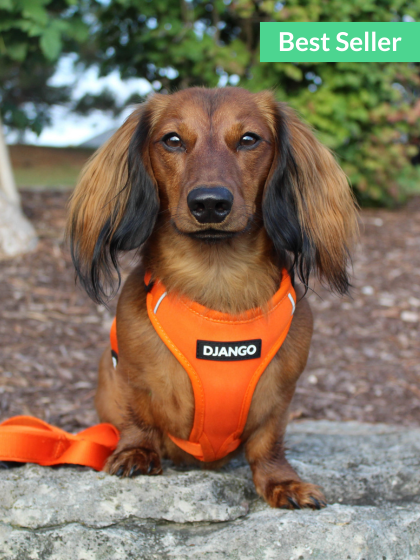
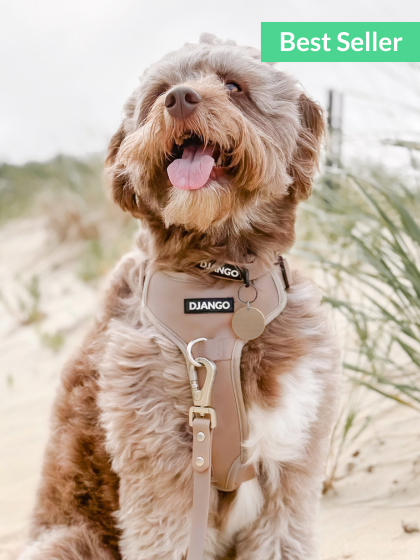
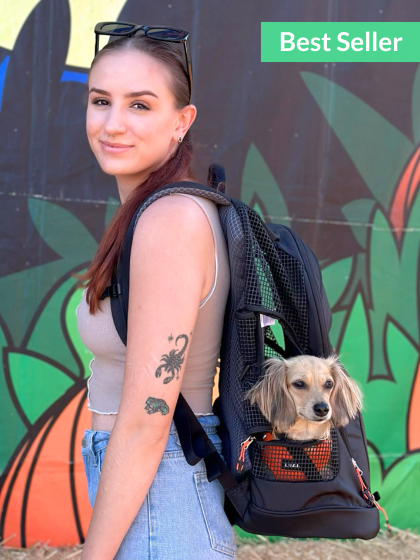

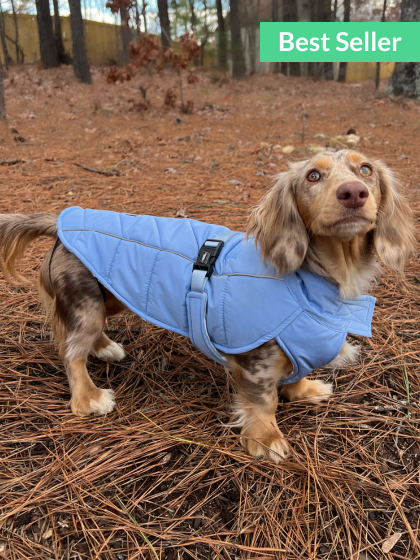
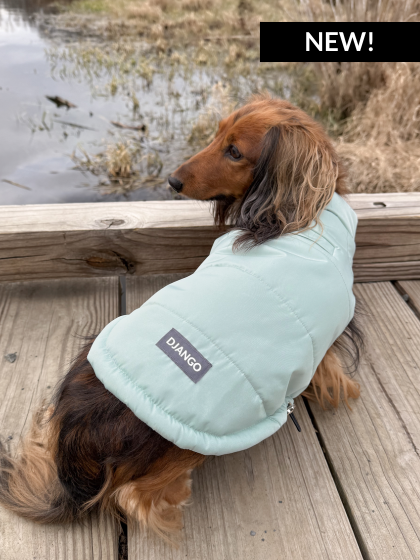
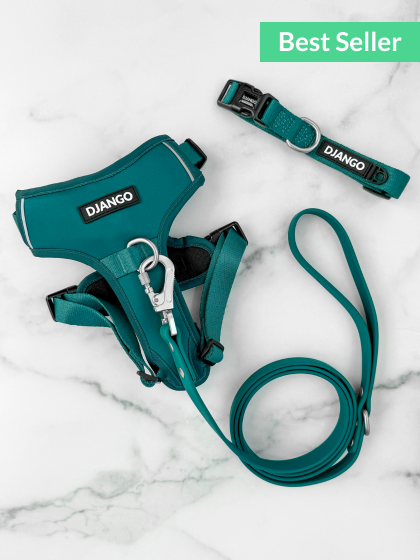


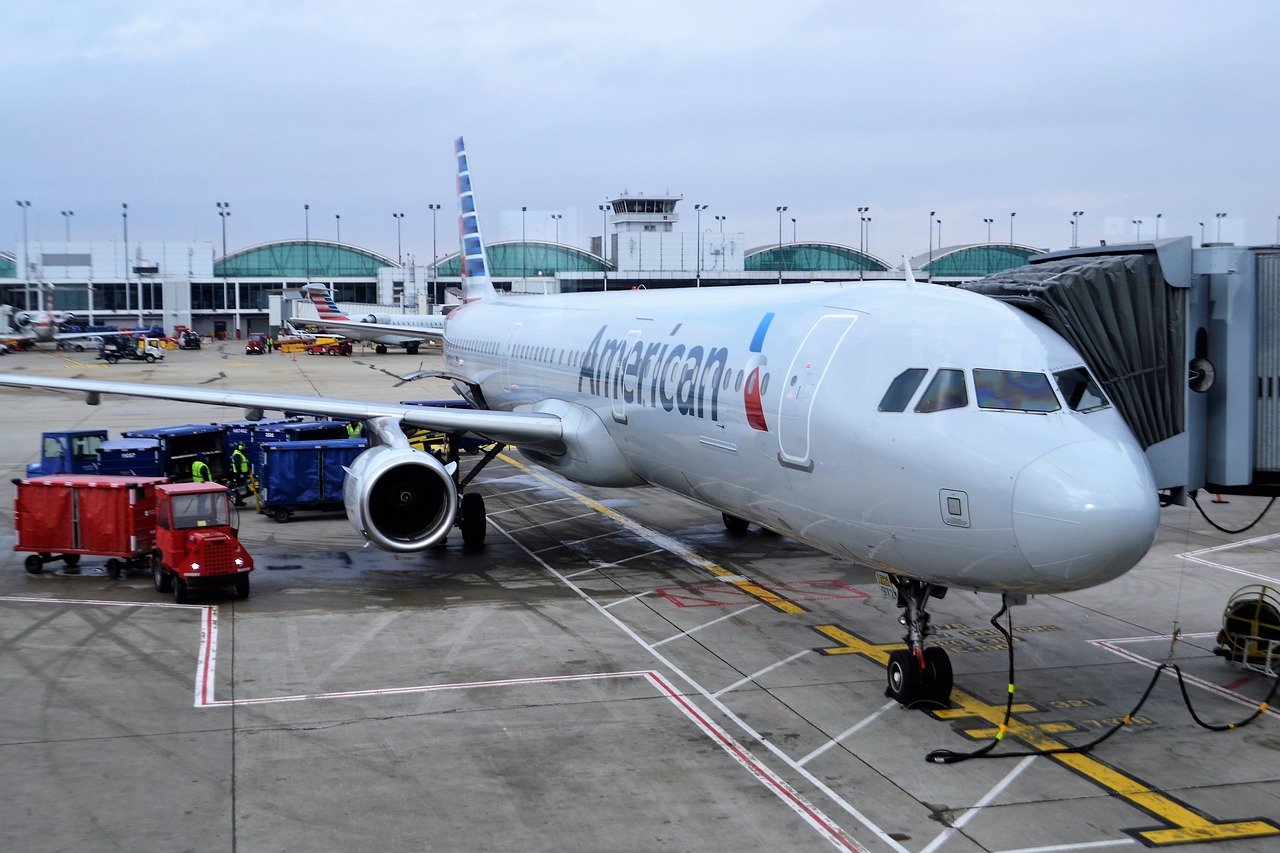

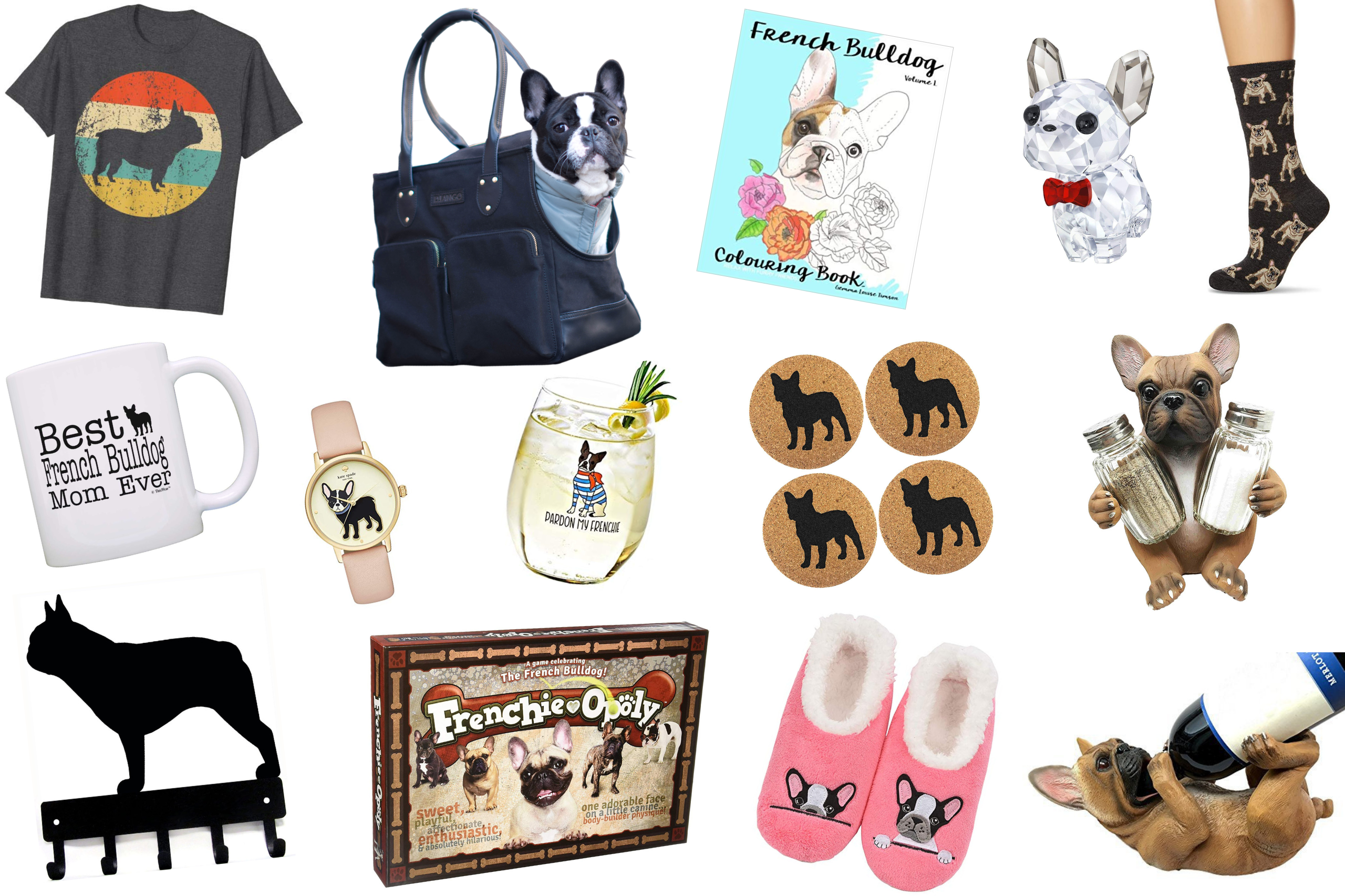
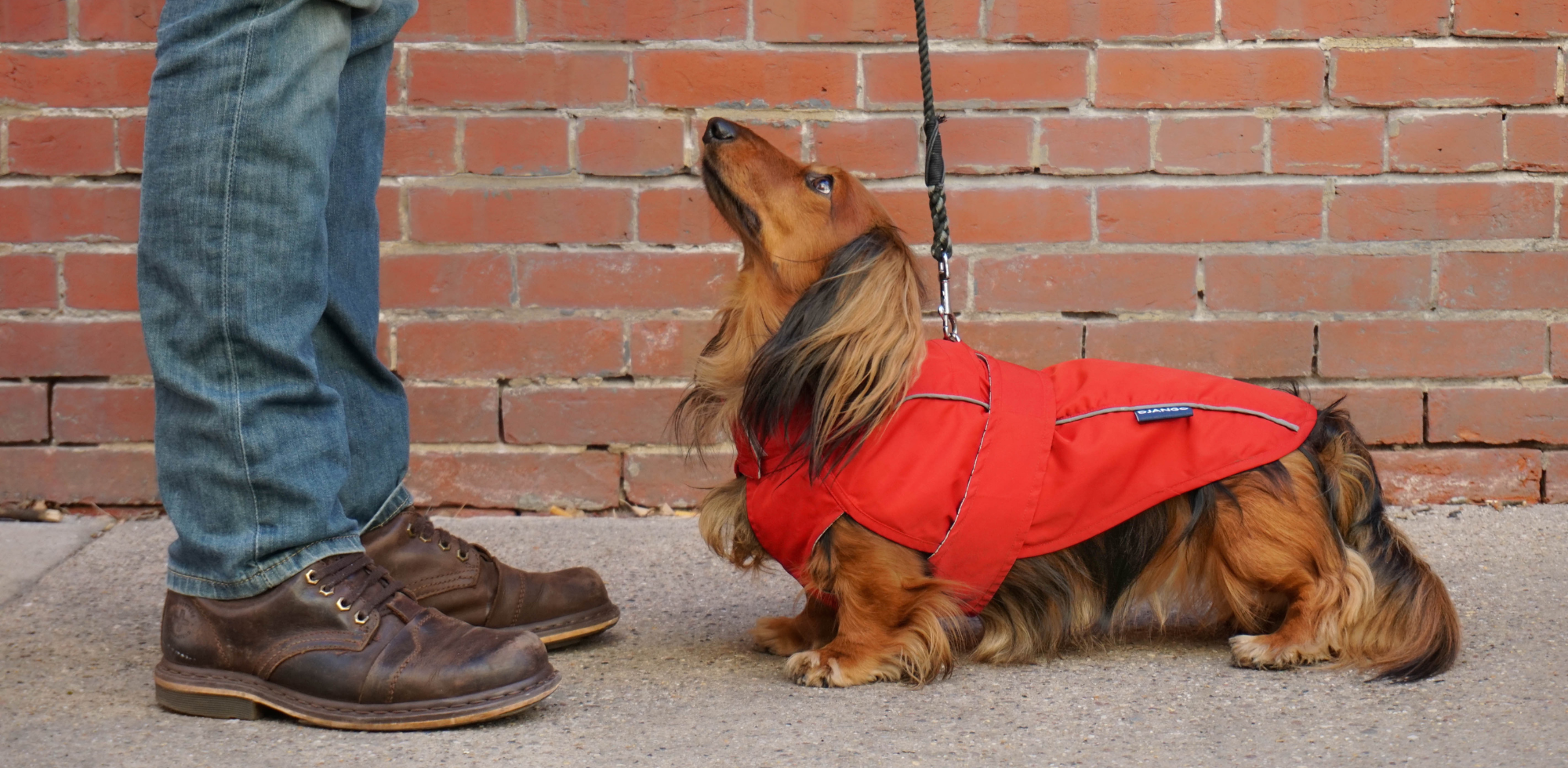
17 comments
DJANGO
@STAN Hi Stan, it’s very nice to hear from you! We never recommend putting a French bulldog or any snub-nosed dog breed in cargo (the hold of the plane). Most reputable airlines also prohibit Frenchies and other brachycephalic dog breeds from flying via cargo given their predisposition to breathing problems. I strongly recommend calling your airline to understand their pet travel and pet cargo policy for French bulldogs.
@STAN Hi Stan, it’s very nice to hear from you! We never recommend putting a French bulldog or any snub-nosed dog breed in cargo (the hold of the plane). Most reputable airlines also prohibit Frenchies and other brachycephalic dog breeds from flying via cargo given their predisposition to breathing problems. I strongly recommend calling your airline to understand their pet travel and pet cargo policy for French bulldogs.
Stan
I am going to fly my frenchie in cargo for 2-3 hours direct fly internationally . Is it safe ??
I am going to fly my frenchie in cargo for 2-3 hours direct fly internationally . Is it safe ??
Patti Morgan
Here is my question/concern. Our doberman has flown cargo multiple times. No issues ever. Although I always have this thought:
My nerves are about if the plane can’t take off for some reason after we are all loaded/ stuck on the tarmac.
This has never happened to us but being delayed happens.
What is done to provide comfort to the dog. Will they come and get the owner and allow us to deplane with the dog until the problem is solved.
It gets hot and stuffy in the cabin when take off is delayed, I can’t imagine it is more climate controlled in the cargo.
Just wondering if there are an concessions made if it is known that the take off will be delayed for hours.
We don’t have our Dobie any longer, but want to get another. However, the above gives me pause.
TY.
Here is my question/concern. Our doberman has flown cargo multiple times. No issues ever. Although I always have this thought:
My nerves are about if the plane can’t take off for some reason after we are all loaded/ stuck on the tarmac.
This has never happened to us but being delayed happens.
What is done to provide comfort to the dog. Will they come and get the owner and allow us to deplane with the dog until the problem is solved.
It gets hot and stuffy in the cabin when take off is delayed, I can’t imagine it is more climate controlled in the cargo.
Just wondering if there are an concessions made if it is known that the take off will be delayed for hours.
We don’t have our Dobie any longer, but want to get another. However, the above gives me pause.
TY.
PDS INTERNATIONAL PVT. LTD
• This article contains very valuable information for beginners. This is a very informative blog for me, thank you for sharing this blog. PDS International is also Best Digital Freight Forwarder PDS INTERNATIONAL PVT LTD
• This article contains very valuable information for beginners. This is a very informative blog for me, thank you for sharing this blog. PDS International is also Best Digital Freight Forwarder PDS INTERNATIONAL PVT LTD
DJANGO
@STEFFANY Hi! It’s nice to hear from you. Just so I understand correctly, does your pet carrier measure 21 inches in height and 19 inches in length? No airline that we know of will allow a pet carrier in cabin that measures 21 inches in height since it will not fit under the seat in front of you. Some airlines will allow carriers with length up to 19-20”, however, so long as the carrier is soft-sided and able to be squeezed under the seat in front of you (vs. a hard-sided carrier which cannot bend in any way).
Since your jack russell terrier is 18lbs, you might want to look into a pet carrier with expandable sides. More specifically, you can find many that allow you to expand the mesh windows once your pet is situation on board the cabin. When in compact form, the airline pet bag will comply with airline pet policy. When expanded, however, your pup has a few more inches to stretch out and relax comfortably.
@STEFFANY Hi! It’s nice to hear from you. Just so I understand correctly, does your pet carrier measure 21 inches in height and 19 inches in length? No airline that we know of will allow a pet carrier in cabin that measures 21 inches in height since it will not fit under the seat in front of you. Some airlines will allow carriers with length up to 19-20”, however, so long as the carrier is soft-sided and able to be squeezed under the seat in front of you (vs. a hard-sided carrier which cannot bend in any way).
Since your jack russell terrier is 18lbs, you might want to look into a pet carrier with expandable sides. More specifically, you can find many that allow you to expand the mesh windows once your pet is situation on board the cabin. When in compact form, the airline pet bag will comply with airline pet policy. When expanded, however, your pup has a few more inches to stretch out and relax comfortably.
DJANGO
@KATIE Hello! So sorry for the huge delay with this reply. Responding now in case others have a similar question.
Yes, flying a pet via cargo is scary for us pet owners, but it is worth emphasizing that the actual risk of injury or even death is incredibly low. Make sure you select a reputable airline with strict pet cargo travel protocols in place (i.e. choose an airline that will not allow pets in cargo if temperatures drop below or rise above certain levels). Also, please have your veterinarian perform a thorough health and wellness check up on your dog before planning your trip to ensure he’s in top shape and safe to travel.
@KATIE Hello! So sorry for the huge delay with this reply. Responding now in case others have a similar question.
Yes, flying a pet via cargo is scary for us pet owners, but it is worth emphasizing that the actual risk of injury or even death is incredibly low. Make sure you select a reputable airline with strict pet cargo travel protocols in place (i.e. choose an airline that will not allow pets in cargo if temperatures drop below or rise above certain levels). Also, please have your veterinarian perform a thorough health and wellness check up on your dog before planning your trip to ensure he’s in top shape and safe to travel.
DJANGO
@BOB R Hello, and congrats on the upcoming relocation to Asia. First and foremost, I would have your cat’s veterinarian provide a thorough check up on your cat to ensure she is in good health and fit for travel. Given the total length of the trip, I would personally recommend in cabin travel (vs. cargo travel). In between legs, you could go to a pet-friendly area of the airport and take your cat out of her carrier so she can stretch her legs. As silly as this might sound, I would suggest getting your cat a comfort harness and leash to ensure her safety while out of the carrier. She could be a bit rattled and jumpy after experiencing flying for the first time, and keeping her secure is obviously a priority.
Here are additional tips for preparing a pet for in cabin travel (copy/paste link in new browser bar):
https://djangobrand.com/blogs/news/how-to-prepare-your-dog-to-fly-in-the-airplane-cabin
The tips are geared towards dogs, but many apply for cats preparing for in cabin pet travel.
@BOB R Hello, and congrats on the upcoming relocation to Asia. First and foremost, I would have your cat’s veterinarian provide a thorough check up on your cat to ensure she is in good health and fit for travel. Given the total length of the trip, I would personally recommend in cabin travel (vs. cargo travel). In between legs, you could go to a pet-friendly area of the airport and take your cat out of her carrier so she can stretch her legs. As silly as this might sound, I would suggest getting your cat a comfort harness and leash to ensure her safety while out of the carrier. She could be a bit rattled and jumpy after experiencing flying for the first time, and keeping her secure is obviously a priority.
Here are additional tips for preparing a pet for in cabin travel (copy/paste link in new browser bar):
https://djangobrand.com/blogs/news/how-to-prepare-your-dog-to-fly-in-the-airplane-cabin
The tips are geared towards dogs, but many apply for cats preparing for in cabin pet travel.
Stefanny
Hello,
I have a jack russell terrier, he’s about 18lbs, however, its 21" H and 19" L, base on the dimensions of pet carrier, he might be a bit too big if he wants to stand up and turn….. any thoughts on whether he might be ok to travel in cabin? Trying to avoid cargo if possible
Hello,
I have a jack russell terrier, he’s about 18lbs, however, its 21" H and 19" L, base on the dimensions of pet carrier, he might be a bit too big if he wants to stand up and turn….. any thoughts on whether he might be ok to travel in cabin? Trying to avoid cargo if possible
Bob R
Much good feedback. The family wants to relocate to Asia with our 11 year old 14-lb cat. She could fit into a soft pet carry-on that fits under the seat or she could go through cargo. The total trip is estimated to be 30 hours once out of the house. It’s a long time for our feline to be in a cramped bag as well as the alternative of experiencing the trip in cargo. Each leg is about 11 hours with 3-4 hour layover. Any feedback on how to approach this regarding the health and well-being of our beloved pet will be appreciated since we do not not have a clear vision or experience on how to approach this.
Much good feedback. The family wants to relocate to Asia with our 11 year old 14-lb cat. She could fit into a soft pet carry-on that fits under the seat or she could go through cargo. The total trip is estimated to be 30 hours once out of the house. It’s a long time for our feline to be in a cramped bag as well as the alternative of experiencing the trip in cargo. Each leg is about 11 hours with 3-4 hour layover. Any feedback on how to approach this regarding the health and well-being of our beloved pet will be appreciated since we do not not have a clear vision or experience on how to approach this.
Alan
“The dishes must be attached to the inside of the hard-sided kennel but accessible from the outside (so airline personnel do not have to open the kennel). I have seen similar requirements to this and I can’t figure out how one could possibly accomplish this. How would you attach a dish or bowl to the side of the inside and still make it accessible from the outside. Sounds like magic. And also, wouldn’t the water end up all over the bottom of the carrier as soon as someone tilts it?
“The dishes must be attached to the inside of the hard-sided kennel but accessible from the outside (so airline personnel do not have to open the kennel). I have seen similar requirements to this and I can’t figure out how one could possibly accomplish this. How would you attach a dish or bowl to the side of the inside and still make it accessible from the outside. Sounds like magic. And also, wouldn’t the water end up all over the bottom of the carrier as soon as someone tilts it?
Katie
Have you had any friends or family ship their dog in cargo to Europe from the USA? Im going to be moving to Poland for a year and need to take my terrier Frodo. Im so saddened that he is 22.6 pounds and that is over the weight limit. I’m terrified of him going cargo and the chances he may die. Any tips?
Have you had any friends or family ship their dog in cargo to Europe from the USA? Im going to be moving to Poland for a year and need to take my terrier Frodo. Im so saddened that he is 22.6 pounds and that is over the weight limit. I’m terrified of him going cargo and the chances he may die. Any tips?
DJANGO
@Sarah Hi and thank you for reaching out! I am sorry to hear you are stressed about your upcoming travels since your Pomeranian will be flying via cargo. Statistically speaking, cargo is a very safe place for pets. Yes, the environment can obviously be a little stressful for dogs and cats, but just remember that the environment is climate-controlled, pressurized, and the airline crew is used to flying with pets in cargo. So long as your Pomeranian has no health issues, he or she should be fine making the one trip!
We definitely have some tips that could help make your trip go smoothly:
(1) Visit your vet in advance of your travels to do a health exam and ensure your Pomeranian is healthy and fit for cargo travel.
(2) Teach your dog to love his pet crate well before the trip. If he is used to riding in his crate prior to the trip, he will be more comfortable during the flight. Here is a great resource on how to teach a dog to enjoy riding in a pet carrier or crate – just copy/paste the link into a new browser bar.
https://djangobrand.com/blogs/news/how-to-train-your-dog-to-love-riding-in-a-pet-travel-carrier
(3) Here are a few more tips on preparing your dog for the flight. Although this article refers to in cabin travel, although all of the tips are relevant to cargo travel (i.e. visit your vet, let your dog get a lot of exercise right before the trip, arrive at the airport early to allow time for going to the bathroom and check in, etc).
I hope this helps! Best of luck to you and your Pomeranian on your upcoming flight, and safe travels!
Steph (and Django)
@Sarah Hi and thank you for reaching out! I am sorry to hear you are stressed about your upcoming travels since your Pomeranian will be flying via cargo. Statistically speaking, cargo is a very safe place for pets. Yes, the environment can obviously be a little stressful for dogs and cats, but just remember that the environment is climate-controlled, pressurized, and the airline crew is used to flying with pets in cargo. So long as your Pomeranian has no health issues, he or she should be fine making the one trip!
We definitely have some tips that could help make your trip go smoothly:
(1) Visit your vet in advance of your travels to do a health exam and ensure your Pomeranian is healthy and fit for cargo travel.
(2) Teach your dog to love his pet crate well before the trip. If he is used to riding in his crate prior to the trip, he will be more comfortable during the flight. Here is a great resource on how to teach a dog to enjoy riding in a pet carrier or crate – just copy/paste the link into a new browser bar.
https://djangobrand.com/blogs/news/how-to-train-your-dog-to-love-riding-in-a-pet-travel-carrier
(3) Here are a few more tips on preparing your dog for the flight. Although this article refers to in cabin travel, although all of the tips are relevant to cargo travel (i.e. visit your vet, let your dog get a lot of exercise right before the trip, arrive at the airport early to allow time for going to the bathroom and check in, etc).
I hope this helps! Best of luck to you and your Pomeranian on your upcoming flight, and safe travels!
Steph (and Django)
Sarah
Hi, I’m flying to Canada and my Pomeranian is too big for the cabin size carrier restrictions. I am now having to put him in cargo! Which I am terrified to do as we know it’s a dark and dingy place for him and I feel so bad. I’m considering leaving him at home but this is a permanent move! He’s not used to a crate or anything! Any suggestions you can give to ease my mind xx
Hi, I’m flying to Canada and my Pomeranian is too big for the cabin size carrier restrictions. I am now having to put him in cargo! Which I am terrified to do as we know it’s a dark and dingy place for him and I feel so bad. I’m considering leaving him at home but this is a permanent move! He’s not used to a crate or anything! Any suggestions you can give to ease my mind xx
DJANGO
@KATELYN Hi Katelyn! It’s nice to hear from you. I am happy to provide my opinion and advice based on my many experiences flying with my tweenie sausage dog Django. For your reference, Django is 16” in back length (neck to base of tail) and roughly 14lbs in weight. Similar to your dachshund, he is long for his airline-approved pet carrier despite the pet carrier being the largest/longest size allowed on airlines. We do not have an airline pet bag that has expandable sides, but it is good you have that model given your dog’s longer back length.
For a long-haul flight, and with the details you provided in mind, I would personally recommend taking your dog in the cabin with you. While cargo is statistically a safe place for animals, the environment and experience can still be very stressful for pets. If flying in-cabin is an option for you and your dog, I would proceed this way and simply expand the sides of the pet carrier as soon as the carrier is tucked below the seat in front of you.
Remember that dogs are den animals. Although your little guy is indeed a little big for his airline pet carrier, almost all dogs love a cozy, safe space that is just large enough to fit them. You may see him as cramped (and there may be times he wants to get out and stretch, obviously), but he should be completely fine for one transatlantic flight assuming he is in good physical health.
Has your dog ever used his pet carrier? If not, here are some great tips on how to train your dog to love the travel bag.
HOW TO TRAIN YOUR DOG TO LOVE RIDING IN A PET TRAVEL CARRIER (copy/paste link in new browser bar)
https://djangobrand.com/blogs/news/how-to-train-your-dog-to-love-riding-in-a-pet-travel-carrier
Your dachshund will be much more calm in the air if he’s already used to riding in his carrier and considers it his own safe space.
I hope this helps. Don’t hesitate to reach back out if you have any other questions!
Steph (and Django)
@KATELYN Hi Katelyn! It’s nice to hear from you. I am happy to provide my opinion and advice based on my many experiences flying with my tweenie sausage dog Django. For your reference, Django is 16” in back length (neck to base of tail) and roughly 14lbs in weight. Similar to your dachshund, he is long for his airline-approved pet carrier despite the pet carrier being the largest/longest size allowed on airlines. We do not have an airline pet bag that has expandable sides, but it is good you have that model given your dog’s longer back length.
For a long-haul flight, and with the details you provided in mind, I would personally recommend taking your dog in the cabin with you. While cargo is statistically a safe place for animals, the environment and experience can still be very stressful for pets. If flying in-cabin is an option for you and your dog, I would proceed this way and simply expand the sides of the pet carrier as soon as the carrier is tucked below the seat in front of you.
Remember that dogs are den animals. Although your little guy is indeed a little big for his airline pet carrier, almost all dogs love a cozy, safe space that is just large enough to fit them. You may see him as cramped (and there may be times he wants to get out and stretch, obviously), but he should be completely fine for one transatlantic flight assuming he is in good physical health.
Has your dog ever used his pet carrier? If not, here are some great tips on how to train your dog to love the travel bag.
HOW TO TRAIN YOUR DOG TO LOVE RIDING IN A PET TRAVEL CARRIER (copy/paste link in new browser bar)
https://djangobrand.com/blogs/news/how-to-train-your-dog-to-love-riding-in-a-pet-travel-carrier
Your dachshund will be much more calm in the air if he’s already used to riding in his carrier and considers it his own safe space.
I hope this helps. Don’t hesitate to reach back out if you have any other questions!
Steph (and Django)
Katelyn
Hello, I’m travelling to Canada (London to Calgary) with my tweenie dachshund (21.5’ long), and I’m trying to decide if it’s best for him to travel in the cabin with me or in the hold. He does fit into a cabin sized bag, but it’s a bit tight for him to turn and sit up totally straight. It has expandable sides that could be used in flight. I also have a good sized cargo crate he could use. It’s a long flight, so trying to decide if it’s better for him to have more space for the long flight, or travel with home. I worry about him be scared in the hold without me.
Any advice on travelling with a sausage dog in a cabin? What would you recommend is better for a long flight.
Thanks so much
Katelyn
Hello, I’m travelling to Canada (London to Calgary) with my tweenie dachshund (21.5’ long), and I’m trying to decide if it’s best for him to travel in the cabin with me or in the hold. He does fit into a cabin sized bag, but it’s a bit tight for him to turn and sit up totally straight. It has expandable sides that could be used in flight. I also have a good sized cargo crate he could use. It’s a long flight, so trying to decide if it’s better for him to have more space for the long flight, or travel with home. I worry about him be scared in the hold without me.
Any advice on travelling with a sausage dog in a cabin? What would you recommend is better for a long flight.
Thanks so much
Katelyn
DJANGO
@GINGER TAVAREZ Hello! Thanks for reaching out, and congrats on your new kitten! Very exciting :) Are you flying from Russia to the US with your kitten? If so, here is a really useful Django article detailing the best international airlines for in-cabin pet travel:
>>> https://djangobrand.com/blogs/news/international-airline-pet-policies-for-in-cabin-travel
We do not have experience with specific pet shipping companies so cannot recommend one particular company at this time. Thanks again for reaching out. Enjoy your new four-legged family!
@GINGER TAVAREZ Hello! Thanks for reaching out, and congrats on your new kitten! Very exciting :) Are you flying from Russia to the US with your kitten? If so, here is a really useful Django article detailing the best international airlines for in-cabin pet travel:
>>> https://djangobrand.com/blogs/news/international-airline-pet-policies-for-in-cabin-travel
We do not have experience with specific pet shipping companies so cannot recommend one particular company at this time. Thanks again for reaching out. Enjoy your new four-legged family!
Ginger Tavarez
I’m needing to have a kitten 16 weeks I’m purchasing from Moscow to USA CA which International airlines is best for pet travel ? And can you recommend a pet shipping company ?
I’m needing to have a kitten 16 weeks I’m purchasing from Moscow to USA CA which International airlines is best for pet travel ? And can you recommend a pet shipping company ?